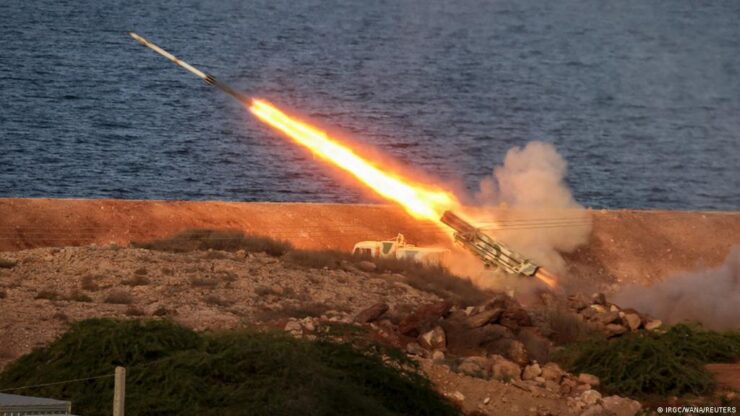
Tel Aviv: All the Israeli sensors are trying to detect signs of Iranian preparations for a direct attack on Israeli targets by using long range missiles. This comes after Hezbollah Secretary-General Hassan Nasrallah warned Israel against continuing its “aggression against the Iranian presence in the region,” saying Iran may “attack Israel directly” during a video address delivered at a ceremony in Beirut on April 29 as Iran and its proxies marked Quds Day.
The Hezbollah is the Iranian proxy controlling Lebanon and frequently used to deliver the messages of the Iranian leaders.
In mid-December Iran’s state-affiliated Tehran Times issued a threat to Israel, publishing a map of the country riddled with red markers of potential targets that will be hit if Israel acts militarily against this country’s nuclear program.
The map on the front page of the Iranian daily was printed under the headline “Just One Wrong Move”.
The article alongside of the map said “An intensification of the Israeli military threats against Iran seems to suggest that the Zionist regime has forgotten that Iran is more than capable of hitting them from anywhere.”
Israel experienced attacks by ballistic missiles. During the Gulf War, Iraq launched 42 Scud missiles into Israel from January 17 to February 23 1991. The Scuds were not accurate and carried a warhead weighing 600-800 kgs. The Iraqi attack was performed with inaccurate missiles and therefore were “statistical” aimed at big cities in Israel. It caused damage and some casualties.
The new advanced Iranian ballistic missiles, are accurate and sources here assess that they will first target Israeli air force bases.
The map in the Iranian daily showed potential targets around Israel, and was published days after satellite images showed that Iran is preparing the test of what is referred to as a satellite launcher. Israeli experts say that this is another step in the development of this country’s long-range ballistic missile capability.
While using the technology of what the Iranians call “space launchers”, they have an operational arsenal of long range ballistic missiles. Israeli experts say that the Iranians have bought North Korean technology and based on it developed the Khorramshar ballistic missile with a range of 2000 km. “This ballistic missile can carry a warhead with a max weight of 2 tons. This missiles is 13 meters long and powered by liquid fuel,” one of the experts said.
The Israeli expert added that the Iranians have another long range ballistic missile powered by solid fuel. This missile – the Sejil has a range of 2000 km and can carry a warhead weighing up to 2000 kg.








